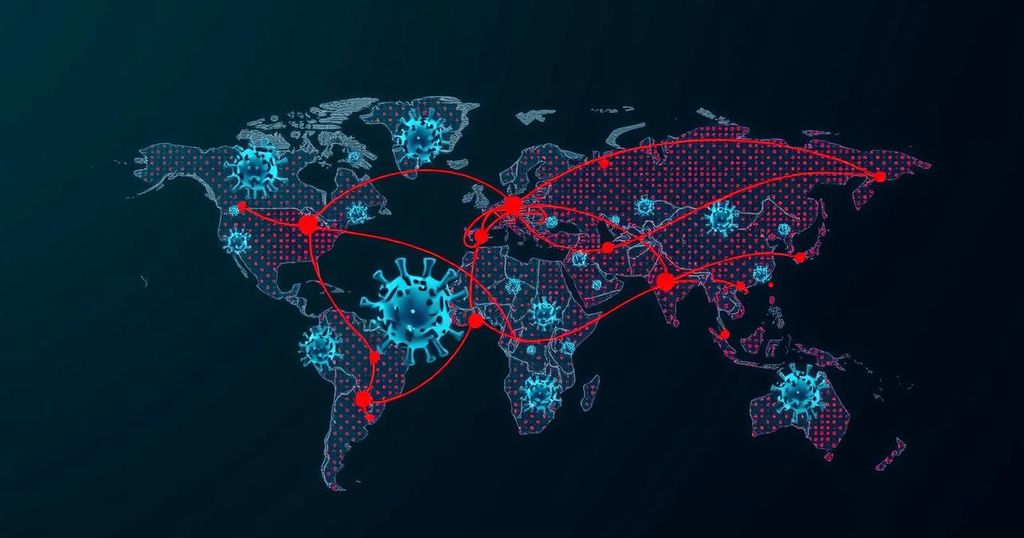Understanding Mpox: Symptoms, Transmission, and Global Response

Mpox, previously known as monkeypox, is a viral disease that has led to a public health emergency in parts of Africa, particularly the Democratic Republic of Congo. It spreads through close contact, with symptoms including fever and a distinct rash. Recent outbreaks have increased concerns about a more virulent strain, Clade 1b. Vaccines exist but access remains limited, necessitating coordinated health responses to curb the spread.
Mpox, previously known as monkeypox, has been identified as a highly contagious disease affecting parts of Africa, particularly the Democratic Republic of Congo (DR Congo). The World Health Organization (WHO) has classified the outbreaks as a public health emergency of international concern due to the alarming number of cases and fatalities. Initially zoonotic, mpox is now transmissible between humans, primarily through close contact, including sexual interactions.
The symptoms of mpox are comparable to those of smallpox, albeit typically less severe. Infected individuals initially exhibit fever, headache, muscle aches, and swollen lymph nodes, which later give way to a distinctive rash. This rash frequently originates on the face before disseminating to various body parts, particularly the palms and soles of the feet. The illness generally lasts between 14 to 21 days, potentially leading to serious complications or even death, especially among vulnerable populations such as young children.
Currently, mpox transmission is concentrated in remote villages of West and Central Africa, with the DR Congo reporting thousands of annual infections and hundreds of deaths. The disease has expanded to neighboring countries, including Burundi, Rwanda, Uganda, and Kenya, where it is not typically endemic. An increase in cases has been observed, prompting concerns about a more virulent type of the virus known as Clade 1b, which could be more contagious and cause more severe illness.
Transmission occurs primarily through close human contact, including sexual activity, skin-to-skin contact, and the handling of contaminated objects. Additionally, the virus can be passed from infected animals to humans, adding to its spread. At-risk groups include healthcare workers, family members of infected individuals, and young children with developing immune systems.
Immunization against mpox exists, although access is limited to individuals at high risk or those exposed to infected persons. The WHO is advocating for emergency use of available vaccines in response to the escalating crisis. The African CDC has announced a continent-wide health emergency, aiming to enhance coordination in medical responses and resource allocation.
As the situation develops, it remains essential to avoid close contact with infected individuals, maintain personal hygiene, and utilize protective measures during intimate encounters. Authorities stress the importance of a global response to contain the outbreak and prevent widespread dissemination beyond the African continent.
Mpox is a viral disease belonging to the Orthopoxvirus genus, which also includes smallpox. Historically, mpox was transmitted from rodents and monkeys to humans, but recent outbreaks indicate a significant level of human-to-human transmission. The disease is endemic in certain regions of Central and West Africa, particularly in the DR Congo, where it has caused recurrent outbreaks. In the last year, significant increases in infections and fatalities have triggered a heightened response from health organizations, leading to the declaration of public health emergencies.
In summary, mpox is a contagious viral infection that poses serious health risks, particularly in certain African regions. With rising case numbers and fatalities, urgent global and local efforts are needed to mitigate its spread through vaccination, public education, and healthcare support. Understanding the transmission methods and vulnerable demographics is crucial for effective management and prevention strategies.
Original Source: www.bbc.com






